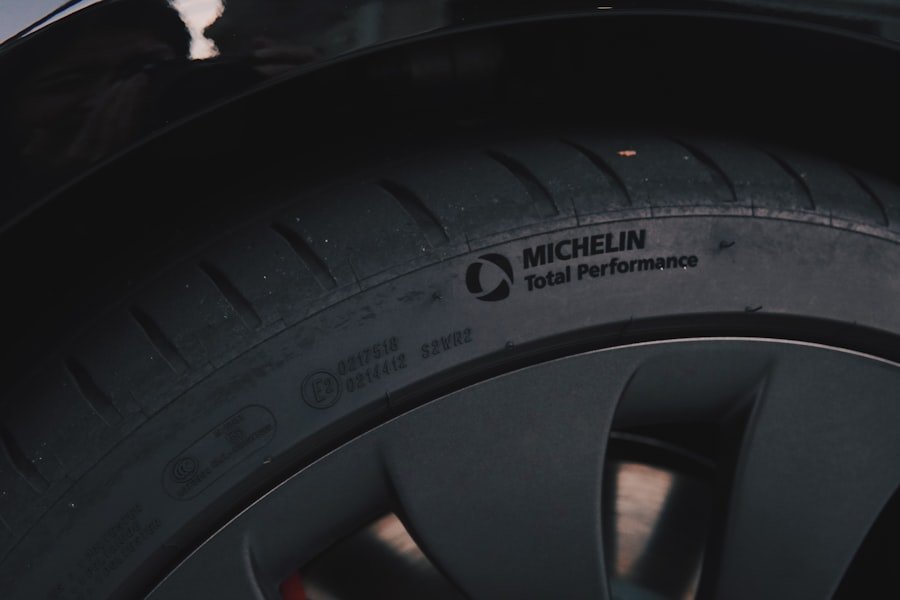All-season tires have become a popular choice among drivers seeking versatility and convenience in their vehicles.
Unlike specialized tires, which are tailored for specific conditions such as winter or summer, all-season tires aim to deliver a compromise that allows for safe driving in both wet and dry conditions, as well as light snow.
The development of all-season tires has been driven by advancements in tire technology and materials. Manufacturers have invested heavily in research and development to create tread patterns and rubber compounds that enhance grip, durability, and comfort. As a result, all-season tires have evolved significantly over the years, offering improved performance characteristics that cater to a wide range of driving needs.
This article will delve into the features, benefits, and considerations surrounding all-season tires, providing a comprehensive guide for consumers looking to make informed decisions.
Key Takeaways
- All-season tires are designed to provide good performance in various weather conditions, making them a popular choice for many drivers.
- Understanding the features and benefits of all-season tires, such as tread patterns and rubber compounds, can help you make an informed decision when choosing the right tires for your vehicle.
- Factors to consider when choosing all-season tires include driving conditions, tread life, and handling characteristics to ensure they meet your specific needs and preferences.
- Comparing all-season tires with other types, such as summer and winter tires, can help you understand their strengths and weaknesses in different weather conditions.
- Determining the right size of all-season tires for your vehicle involves considering the recommended tire size in your vehicle’s owner’s manual and consulting with a tire professional for guidance.
Understanding All-Season Tire Features and Benefits
All-season tires are characterized by their unique tread design, which typically features a combination of grooves and sipes that enhance traction on various surfaces. The tread pattern is engineered to provide stability and control in both wet and dry conditions, allowing drivers to navigate through rain-soaked roads without sacrificing performance. Additionally, the rubber compounds used in all-season tires are formulated to remain flexible in a range of temperatures, ensuring that the tire maintains its grip even as the weather changes.
One of the primary benefits of all-season tires is their convenience. For many drivers, the thought of switching between summer and winter tires can be daunting, not to mention costly. All-season tires eliminate the need for seasonal tire changes, allowing drivers to enjoy a hassle-free experience throughout the year.
Furthermore, these tires often come with longer tread life compared to specialized tires, which can lead to cost savings over time. The versatility of all-season tires makes them an ideal choice for those who may not experience extreme weather conditions but still want reliable performance.
Factors to Consider When Choosing All-Season Tires

When selecting all-season tires, several factors should be taken into account to ensure that the chosen tires meet the specific needs of the vehicle and driver. One of the most critical considerations is the climate in which the vehicle will primarily be driven.
For instance, if a driver frequently encounters heavy snowfall or icy roads, they may need to consider dedicated winter tires instead. Another important factor is the type of vehicle being equipped with all-season tires. Different vehicles have varying weight distributions and handling characteristics, which can influence tire performance.
For example, sports cars may require tires that prioritize grip and responsiveness, while SUVs may benefit from tires designed for stability and off-road capability. Additionally, understanding the driving style of the individual can help narrow down options; aggressive drivers may prefer tires with enhanced performance features, while those who prioritize comfort may opt for a smoother ride.
Comparing All-Season Tires with Other Types of Tires
| Tire Type | Traction | Longevity | Performance |
|---|---|---|---|
| All-Season | Good in most conditions | Moderate | Balanced for everyday use |
| Summer | Excellent in dry conditions | Short | High performance in warm weather |
| Winter | Excellent in snow and ice | Moderate | Designed for cold weather |
| All-Terrain | Good on and off-road | Moderate | Designed for off-road use |
To fully appreciate the advantages of all-season tires, it is essential to compare them with other types of tires available on the market. Summer tires, for instance, are designed specifically for warm weather conditions and offer superior handling and grip on dry roads. However, they tend to lose traction in colder temperatures and are not suitable for snowy or icy conditions.
In contrast, winter tires are engineered with specialized tread patterns and rubber compounds that excel in cold weather, providing enhanced traction on snow and ice. While they offer excellent performance in winter conditions, they can be less effective during warmer months due to their softer rubber composition. All-season tires occupy a middle ground between these two extremes.
They provide adequate performance across a range of conditions but may not match the specialized capabilities of summer or winter tires in their respective environments. This versatility makes all-season tires an attractive option for drivers who experience mild winters and warm summers but do not want to invest in multiple sets of tires. Ultimately, the choice between all-season, summer, or winter tires will depend on individual driving habits and environmental factors.
How to Determine the Right Size of All-Season Tires for Your Vehicle
Choosing the correct size of all-season tires is crucial for ensuring optimal performance and safety. Tire size is typically indicated on the sidewall of the tire itself and follows a standardized format that includes numbers representing width, aspect ratio, and diameter. For example, a tire labeled as P215/65R15 indicates a width of 215 millimeters, an aspect ratio of 65%, and a diameter of 15 inches.
To determine the appropriate tire size for a vehicle, drivers can refer to the owner’s manual or check the tire placard located on the driver’s side door jamb. This placard provides essential information about the recommended tire size and pressure for that specific vehicle model. It is important to adhere to these specifications to maintain proper handling characteristics and avoid potential issues such as uneven wear or compromised safety.
In addition to size, drivers should also consider load ratings and speed ratings when selecting all-season tires. The load rating indicates how much weight each tire can safely carry, while the speed rating denotes the maximum speed at which the tire can perform safely. Ensuring that both ratings meet or exceed the requirements set by the vehicle manufacturer is essential for maintaining safety and performance.
Tips for Maintaining All-Season Tires

Proper maintenance is key to extending the lifespan and performance of all-season tires. Regularly checking tire pressure is one of the most critical aspects of tire maintenance. Under-inflated tires can lead to increased wear and reduced fuel efficiency, while over-inflated tires may result in a harsher ride and decreased traction.
Drivers should check their tire pressure at least once a month and before long trips, adjusting it according to the manufacturer’s recommendations found on the tire placard. Another important maintenance practice is rotating the tires regularly. Tire rotation helps ensure even wear across all four tires by changing their positions on the vehicle.
This practice can extend tire life significantly; many manufacturers recommend rotating tires every 5,000 to 7,500 miles or during oil changes. Additionally, keeping an eye on tread depth is essential for safety; using a tread depth gauge or the penny test can help determine when it’s time for new tires.
The Best All-Season Tires for Different Types of Vehicles
The market offers a wide variety of all-season tires tailored to different types of vehicles and driving needs. For compact cars, options like the Michelin Defender T+H provide excellent fuel efficiency and long tread life while maintaining comfort and quietness on the road. On the other hand, larger vehicles such as SUVs may benefit from all-terrain options like the Goodyear Assurance WeatherReady, which offers enhanced traction on both wet roads and light off-road conditions.
For performance-oriented vehicles, options like the Continental ExtremeContact DWS06 deliver superior handling capabilities while still providing adequate comfort for daily driving. These tires are designed with advanced tread patterns that enhance grip during cornering while maintaining stability at high speeds. Each category of vehicle has specific requirements that can be met by selecting an appropriate all-season tire model designed with those needs in mind.
How to Read and Understand All-Season Tire Ratings
Understanding tire ratings is essential for making informed decisions when purchasing all-season tires. The Uniform Tire Quality Grading (UTQG) system provides valuable information about a tire’s performance characteristics in three key areas: treadwear, traction, and temperature resistance. Treadwear ratings indicate how long a tire is expected to last under normal driving conditions; higher numbers suggest longer-lasting tires.
Traction ratings are categorized from AA (the highest) to C (the lowest), indicating how well a tire can stop on wet surfaces. A higher traction rating means better performance in wet conditions, which is particularly important for all-season tires that need to perform well year-round. Temperature ratings reflect how well a tire can dissipate heat; this is crucial for maintaining performance during high-speed driving or in hot climates.
Additionally, many manufacturers provide their own performance ratings based on independent testing results. These ratings often cover aspects such as noise levels, ride comfort, and handling characteristics. By comparing these ratings across different models, consumers can make more informed choices based on their specific driving needs.
The Importance of Proper Installation and Alignment of All-Season Tires
Proper installation and alignment are critical components that significantly impact tire performance and longevity. When installing new all-season tires, it is essential to ensure that they are mounted correctly on the rims and balanced properly to prevent vibrations while driving. An unbalanced tire can lead to uneven wear patterns and negatively affect handling characteristics.
Alignment is another crucial factor that should not be overlooked during installation. Misalignment can cause premature wear on tires and affect vehicle handling by pulling it to one side or causing steering wheel vibrations. Regular alignment checks are recommended whenever new tires are installed or if there are noticeable changes in handling behavior.
Ensuring proper installation and alignment not only enhances safety but also maximizes the lifespan of all-season tires.
The decision between all-season tires and winter tires often hinges on climate conditions and driving habits. All-season tires are designed for versatility; they perform adequately in various weather conditions but may not excel in extreme situations such as heavy snowfall or icy roads. For drivers living in regions with mild winters where snow accumulation is minimal, all-season tires may be sufficient.
Conversely, winter tires are specifically engineered for cold weather conditions; they feature deeper treads with more aggressive patterns designed to grip snow and ice effectively. The rubber compounds used in winter tires remain pliable at lower temperatures, providing enhanced traction when it’s most needed. For those who frequently encounter harsh winter conditions or live in areas prone to heavy snowfall, investing in dedicated winter tires may be more beneficial than relying solely on all-season options.
Ultimately, understanding personal driving needs and local climate conditions will guide consumers toward making an informed choice between all-season and winter tires.
Making the Best Choice for All-Season Tires
Selecting the right all-season tire involves careful consideration of various factors including climate conditions, vehicle type, maintenance practices, and personal driving preferences. By understanding the features and benefits associated with all-season tires as well as comparing them with other types available on the market, consumers can make informed decisions that enhance their driving experience year-round. With advancements in technology leading to improved performance characteristics across different models available today, finding an all-season tire that meets specific needs has never been easier.
Whether prioritizing comfort during daily commutes or seeking enhanced grip during inclement weather conditions, there exists an array of options tailored for diverse driving scenarios—ensuring safety without compromising versatility throughout every season.
When considering how to choose all-season tires, it is important to also think about proper maintenance techniques for other household items. One related article that may be of interest is Seasoning a Cast Iron Skillet: The Proper Technique. Just like tires need to be properly cared for to ensure longevity and performance, cast iron skillets also require specific steps to maintain their quality. By learning the proper techniques for seasoning a cast iron skillet, you can ensure that it will last for years to come.
FAQs
What are all-season tires?
All-season tires are designed to provide good performance in a variety of weather conditions, including dry, wet, and light snow. They are a popular choice for drivers who want a tire that can handle a range of conditions without needing to switch to winter or summer tires.
What factors should I consider when choosing all-season tires?
When choosing all-season tires, it’s important to consider factors such as tread pattern, tread compound, and tire size. Tread pattern affects traction and handling, while tread compound affects the tire’s performance in different temperatures. Tire size should match the specifications recommended by your vehicle’s manufacturer.
How do I know if all-season tires are right for my vehicle?
All-season tires are a good choice for drivers who live in areas with mild to moderate weather conditions. If you live in an area with extreme winter weather, you may want to consider switching to winter tires for better traction and handling in snow and ice.
What are the benefits of all-season tires?
All-season tires offer the convenience of not needing to switch between winter and summer tires, making them a cost-effective option for many drivers. They also provide good performance in a variety of conditions, making them a versatile choice for everyday driving.
Are there any drawbacks to using all-season tires?
While all-season tires offer good performance in a variety of conditions, they may not provide the same level of traction and handling as dedicated winter or summer tires in extreme weather. Drivers in areas with harsh winters or hot summers may find that dedicated tires offer better performance.

